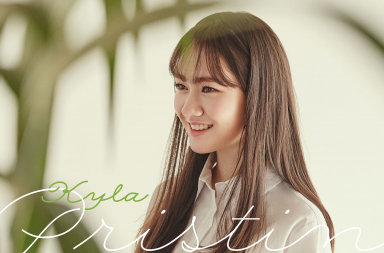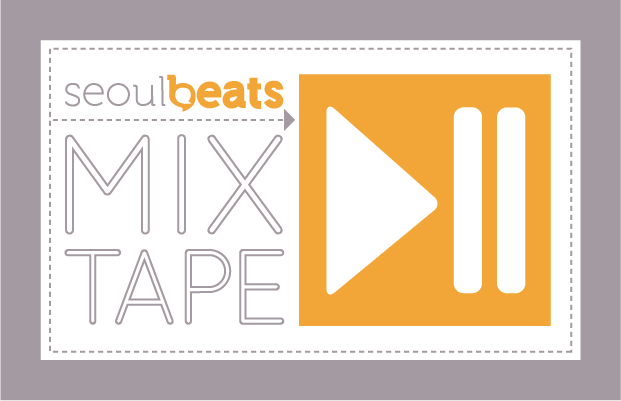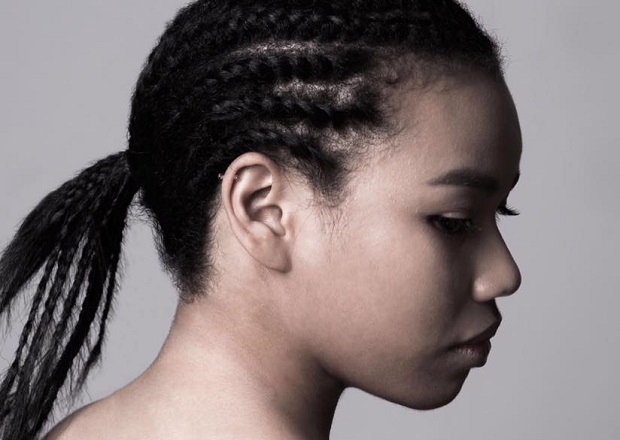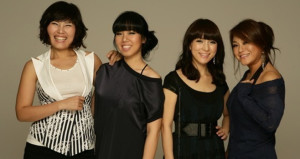 K-pop concepts come and go. Some even cause huge controversies and massive discussions of moral culpability. However, one concept that’s reared its head a couple times in the past decade has been that of the not-so-perfect idol—idols who have what are considered “imperfections” by the standards of beauty that fans and industry professionals have constructed. We’re talking healthy, voluptuous women, “Plain Jane” ladies who forgo surgery to focus on vocals. Fellows who aren’t stacked to oblivion, whose faces you’d never notice if they walked past you.
K-pop concepts come and go. Some even cause huge controversies and massive discussions of moral culpability. However, one concept that’s reared its head a couple times in the past decade has been that of the not-so-perfect idol—idols who have what are considered “imperfections” by the standards of beauty that fans and industry professionals have constructed. We’re talking healthy, voluptuous women, “Plain Jane” ladies who forgo surgery to focus on vocals. Fellows who aren’t stacked to oblivion, whose faces you’d never notice if they walked past you.
It’s a concept that’s been tried in the past by a few groups, a couple of them successful until the cold, hard fist of reality punched them in the face, informing them that no one’s buying records or merch from the nice librarian down the street with a powerful voice but the homely façade. No one’s drooling over the grocery-story oppa with the music IQ of 125, the voice made of raw honey, and the adorable crooked-toothed smile. People want a golden statue to worship, pray for the perfect nose, fawn over the chocolate abs. Hence “idol”—literally meaning “a representation or symbol of an object of worship,” in Biblical terms, a false god… god, ladies and gentlemen.
It’s fact, people see first; then they make their judgments based on what they observe visually. It’s human nature to react positively to a beautiful face. Everything else—voice, personality, sense of humor—is secondary and is not at all as instantly gratifying as that coveted perfectly symmetrical face. More than that, it’s proven substantially more lucrative for companies to rely on their pretty-faced idols to bring in the big bucks. For example, according to University of Texas professor of economics Daniel S. Hamermesh
… one study showed that an American worker who was among the bottom one-seventh in looks, as assessed by randomly chosen observers, earned 10 to 15 percent less per year than a similar worker whose looks were assessed in the top one-third — a lifetime difference, in a typical case, of about $230,000.
This is not to suggest American and Korean standards of beauty are the same, or even that those standards produce the exact same monetary results. However, in a culture where a headshot is requisite with a résumé for an office position, it’s safe to say one’s exterior appearance, as much or more than their qualifications, informs his or her economic worth to a company.
It’s no surprise that the idea of having an “idol” who doesn’t fit the oft times plastic perfection seen on TV has cropped up every few years. However, the idea has never truly stuck, at least not for long. Many tout Big Mama and Piggy Dolls—two female groups with big voices and looks that defied the norm—as the leading examples of how raw talent alone diminishes the necessity for judgment based on visual appeal. Big Mama was comprised of a group of ladies varying in age, size, and height. Piggy Dolls, as their name suggests, was comprised of heavyset women, who were proud of their voluptuous bodies and were even brazen in how they bucked the trend.
[youtube http://youtu.be/vEs-pIYy3kA]However, the truth of the music industry didn’t allow for these groups to remain that successful for long. Quite frankly, anything that pushes against the norm is thought of as a “concept,” something that hits big for a moment because of its difference, then fizzles into the background. Waning sales and interest from their record labels was enough incentive to get both groups of ladies to slim down. Eventually the loss of a few pounds wasn’t enough to compete with the evergreen beauty of the idol groups they had to contend with, and Big Mama eventually disbanded, and the original Piggy Dolls lineup was replaced by a trio of girls who better prescribed to the successful standard set in place since the beginning of the idol system in K-pop.
Now, with the debut of Lee Michelle and the “ajummah” idol group Girl Hood, perhaps the concept of the “alternative” standard of beauty is making a comeback. There’s no doubt that many will find Lee Michelle and the members of Girl Hood attractive in their own rights. However, I’d be daft to suggest that they fit the very strict standards of beauty set in K-pop. Two of the most prominent criteria for discerning someone’s beauty, and thus overall appeal, are skin tone and age, two features being contested in this latest “resurgence” of the alternatively beautiful idol.
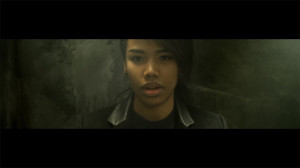 Whether it’s a construct of Imperialism or a preference wrought from years of noticing the appearance of nobility, it seems Korean culture is obsessed with lily white skin, the lighter the better (or, as has been mentioned on a few occasions, “cleaner”). Lee Michelle offers us another example of a mixed-heritage woman presenting herself as beautiful and powerful because of it. She’s blessed to be in good company, trailblazers like Insooni and Yoon Mi-rae opening the door for her to squeeze through. Though there aren’t an influx of half-Black, half-Korean women flocking to the major companies and hoping for a bar of that idol gold, Lee Michelle and the team at DIMA Entertainment have challenged the notion that “pure blood” or fare skin are the only ideals of beauty. The response her MV has gotten—over 380,000 views on YouTube since last week’s debut and emotional video reactions from fans all over the world—is an indication that a positive message and beautiful voice far outshine the need to fit the norm.
Whether it’s a construct of Imperialism or a preference wrought from years of noticing the appearance of nobility, it seems Korean culture is obsessed with lily white skin, the lighter the better (or, as has been mentioned on a few occasions, “cleaner”). Lee Michelle offers us another example of a mixed-heritage woman presenting herself as beautiful and powerful because of it. She’s blessed to be in good company, trailblazers like Insooni and Yoon Mi-rae opening the door for her to squeeze through. Though there aren’t an influx of half-Black, half-Korean women flocking to the major companies and hoping for a bar of that idol gold, Lee Michelle and the team at DIMA Entertainment have challenged the notion that “pure blood” or fare skin are the only ideals of beauty. The response her MV has gotten—over 380,000 views on YouTube since last week’s debut and emotional video reactions from fans all over the world—is an indication that a positive message and beautiful voice far outshine the need to fit the norm.
In the case of Girl Hood, the average age of which is 34, we see that married women who are older, more experienced have the ability to be just as sexy and desirable as their younger counterparts. They certainly played up to their good looks in their debut music video, highlighting that age is truly nothing but a number. A spokesperson from SC Entertainment made it clear, “The members wanted to give hope to the women who have given up on their dreams due to their positions as wives and mothers.” It’s a message to all women that no matter your age or your occupation, you have the right to believe you’re sexy, to believe you have a chance to grasp onto that coveted title as “idol.”
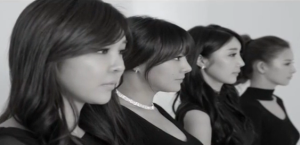 Perhaps that’s what this newest wave of alternate beauties is trying to accomplish, pushing the idea that no matter your ethnicity, age, lot in life you are beautiful and have the right to believe you can be part of that idol system that wold otherwise not even look in your direction. The landscape of K-pop isn’t so much changing to accept these women. More or less, the industry may just be expanding. History has shown us the typical idol formula—pretty face, slim waist, godlike physique—works. It’s lucrative and is actually in direct concert with how mainstream society all over the world places precedence on beauty over any other aspect of human makeup. However, maybe that definition is starting to include examples of beauty contrary to what we’ve been led to believe is the norm. It’s been done in the past, and it’s been successful. Will we begin to see more guy groups open up to this concept? That perfection is an illusion, a state of mind, more than it is an unbreakable law of society? Or will this wave, like those of the past, be relegated to the “concept” bin and discarded in the end for what’s safe and what’s acceptable? Do these ladies have a chance?
Perhaps that’s what this newest wave of alternate beauties is trying to accomplish, pushing the idea that no matter your ethnicity, age, lot in life you are beautiful and have the right to believe you can be part of that idol system that wold otherwise not even look in your direction. The landscape of K-pop isn’t so much changing to accept these women. More or less, the industry may just be expanding. History has shown us the typical idol formula—pretty face, slim waist, godlike physique—works. It’s lucrative and is actually in direct concert with how mainstream society all over the world places precedence on beauty over any other aspect of human makeup. However, maybe that definition is starting to include examples of beauty contrary to what we’ve been led to believe is the norm. It’s been done in the past, and it’s been successful. Will we begin to see more guy groups open up to this concept? That perfection is an illusion, a state of mind, more than it is an unbreakable law of society? Or will this wave, like those of the past, be relegated to the “concept” bin and discarded in the end for what’s safe and what’s acceptable? Do these ladies have a chance?
(Xinhua Net, The New York Times, Ask a Korean, Nate, YouTube [1][2][3])
